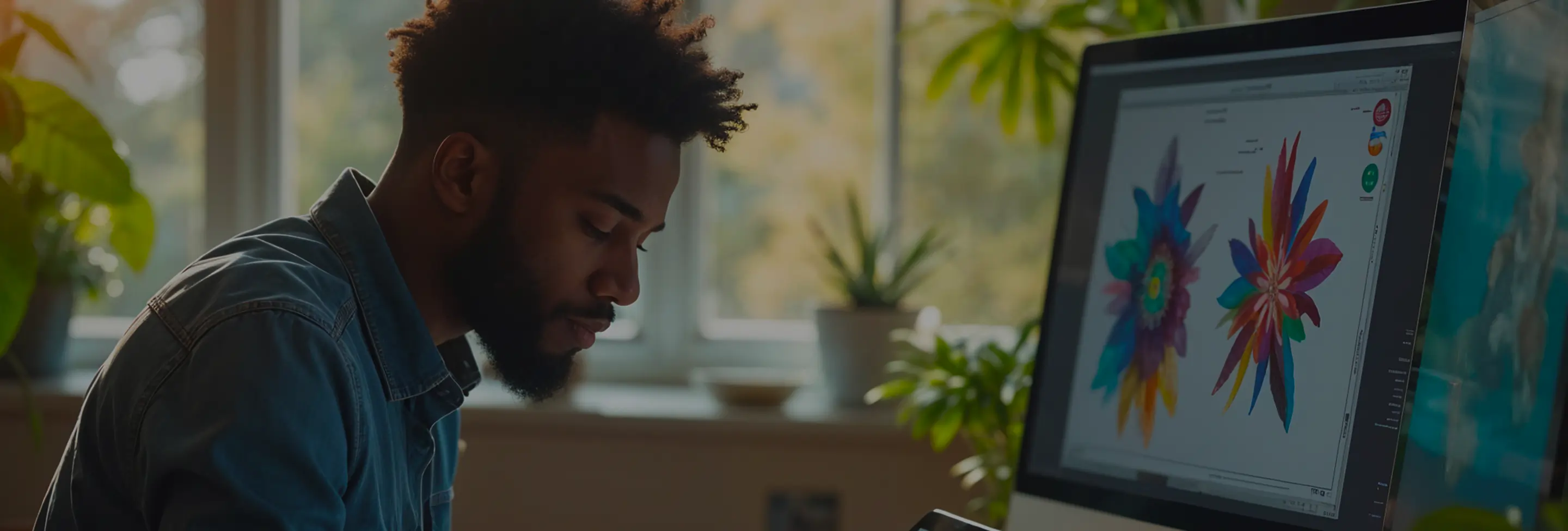
After reviewing over 1,000 startup social media campaigns, these 15 design questions consistently influenced user engagement and brand growth. Drawing from expert experiences and real-world case studies, this comprehensive guide addresses the most critical aspects of social media design tailored for startups looking to establish a strong online presence.
Consistency in social media design is crucial for establishing brand recognition and trust. When your visual elements—such as colors, fonts, and logos—remain consistent across platforms, users can easily identify and recall your brand. For startups, this uniformity helps differentiate from competitors and reinforces your brand message.
Example: A startup using a specific shade of blue and a unique logo across Twitter, Instagram, and LinkedIn ensures that users recognize the brand regardless of the platform they encounter it on.
Actionable Solution: Develop a brand style guide outlining your color palette, typography, logo usage, and imagery style. Ensure all team members and designers adhere to this guide when creating content.
Key visual elements include:
Example: A fitness startup might use vibrant colors, dynamic images of people exercising, and bold typography to convey energy and motivation.
Actionable Solution: Audit your social media profiles to ensure all visual elements are aligned with your brand guidelines. Update any inconsistencies to present a unified brand image.
Logos should be prominently displayed but not overpowering. They serve as the primary identifier of your brand.
Best Practices:
Common Misconception: Overloading graphics with large logos can make designs appear cluttered and unprofessional.
Actionable Solution: Place logos in corners or use them as transparent overlays to maintain visibility without overwhelming the design.
Engaging design elements include:
Example: An Instagram post with a striking image, a bold headline, and a clear CTA button typically sees higher engagement rates.
Actionable Solution: Design posts with a clear focus, prioritize readability, and include interactive elements to boost user interaction.
With the majority of social media users accessing platforms via mobile devices, mobile optimization is essential. If designs aren’t mobile-friendly, they can lead to poor user experiences, reduced engagement, and decreased follower growth.
Key Considerations:
Real-World Example: A startup noticed increased engagement after redesigning their Instagram stories to be more vertical and mobile-centric, aligning with how users view content.
Actionable Solution: Test your social media designs on multiple devices to ensure they appear correctly and function smoothly on both mobile and desktop.
Accessibility ensures that all users, including those with disabilities, can interact with your content effectively. Inclusive design broadens your audience and demonstrates brand responsibility.
Implementation Tips:
Common Pitfall: Neglecting to include alt text or captions can make your content inaccessible to a significant portion of your audience.
Actionable Solution: Incorporate accessibility checks into your design process, using tools like contrast checkers and ensuring all multimedia content is accessible.
Balancing promotional and engaging content prevents your audience from feeling overwhelmed by sales pitches, thereby maintaining interest and loyalty.
Strategy Framework:
Example: A tech startup shares industry-related tips and tutorials alongside occasional product updates and promotions.
Actionable Solution: Plan a content calendar that includes a variety of post types, ensuring a healthy mix between value-driven and promotional content.
Effective storytelling through design creates emotional connections and makes your brand more relatable.
Design Strategies:
Real-World Example: A startup shares a series of posts documenting a product’s development journey, using consistent visuals and narrative to engage the audience.
Actionable Solution: Create a storyboard for your social media campaigns, ensuring each post contributes to the overall story you want to tell.
Data analytics provides insights into what design elements resonate with your audience, allowing you to refine your strategy for better results.
Key Metrics to Analyze:
Example: A startup discovers that posts with infographics receive higher shares and adjusts their content strategy to include more visual data representations.
Actionable Solution: Regularly review your social media analytics to identify trends and adjust your design strategies based on what’s performing well.
Incorporating UGC fosters community and trust, as users see authentic content from real customers.
Best Practices:
Example: A startup fashion brand regularly features customer photos wearing their products, styled uniformly to match the brand’s aesthetic.
Actionable Solution: Create a dedicated hashtag for UGC and develop templates or guidelines to ensure submitted content fits your design standards.
Animations and motion graphics capture attention and can convey complex information in an engaging way.
Benefits:
Implementation Tips:
Real-World Example: A startup creates short animated videos explaining their product features, resulting in higher engagement rates compared to static posts.
Actionable Solution: Incorporate simple animations into your social media posts using tools like Adobe After Effects or Canva’s animation features to add movement without overwhelming the viewer.
Designing for multiple platforms can be challenging due to varying specifications, audience behaviors, and content formats.
Common Challenges:
Solutions:
Example: A startup uses a base template for graphics and adjusts the dimensions and minor elements for Instagram, Facebook, and LinkedIn without altering the core design.
Actionable Solution: Develop a versatile set of design templates that can be quickly adapted to meet the specific requirements of each social media platform.
Startups often need powerful yet affordable tools to manage their social media design effectively.
Recommended Tools:
Example: A startup uses Canva to quickly create engaging Instagram posts and stories without needing advanced design skills.
Actionable Solution: Evaluate the features of these tools to determine which best fit your team’s needs and budget. Start with free versions to test capabilities before committing to paid plans.
Although SEO is typically associated with websites, social media designs can also impact discoverability and engagement, indirectly influencing SEO.
Optimization Tips:
Real-World Example: A startup includes relevant keywords in their Instagram bio and post captions, improving their discoverability through platform search functions.
Actionable Solution: Optimize your social media profiles and content by including keywords, descriptive alt text, and ensuring your brand is easily searchable across platforms.
User feedback is invaluable for refining social media designs to better meet audience preferences and enhance engagement.
Steps to Iterate Designs:
Example: A startup adjusts the color scheme of their social media graphics after user feedback indicates that the original colors were too harsh and not aligned with the brand’s friendly image.
Actionable Solution: Establish a feedback loop where user input is regularly collected and systematically applied to your design process, ensuring continuous improvement and alignment with audience preferences.
Common mistakes include:
Solutions:
Actionable Tip: Regularly review your social media designs to identify and correct any recurring issues, ensuring a polished and professional presence.
Low engagement can result from several factors beyond design, but understanding and addressing these can help improve performance.
Potential Issues and Solutions:
Example: A startup notices lower engagement on Facebook after a platform algorithm update and shifts their strategy to include more video content, resulting in improved interaction.
Actionable Solution: Analyze your engagement data to identify patterns or anomalies, and experiment with different content types and strategies to find what works best for your audience.
Recovering from a design failure or backlash requires swift and thoughtful action to rebuild trust and correct mistakes.
Recovery Strategies:
Real-World Example: After a backlash over a poorly designed campaign that was perceived as insensitive, a startup issued a sincere apology, rebranded the campaign with improved designs, and involved community feedback in the redesign process.
Actionable Solution: Develop a crisis response plan that includes steps for addressing design-related issues, ensuring your startup can respond effectively and maintain a positive reputation.
Designing an effective social media presence for a startup involves a strategic blend of consistency, engagement, and adaptability. By addressing these expert-backed questions, startups can create compelling social media designs that resonate with their audience, foster brand loyalty, and drive growth. Continuously monitor performance, seek user feedback, and stay abreast of design trends to maintain a dynamic and impactful social media presence.




Subscribe to our newsletter to receive $100 off your first month of Tapflare's flat rate unlimited design and development service. Your coupon code will be sent to your email.